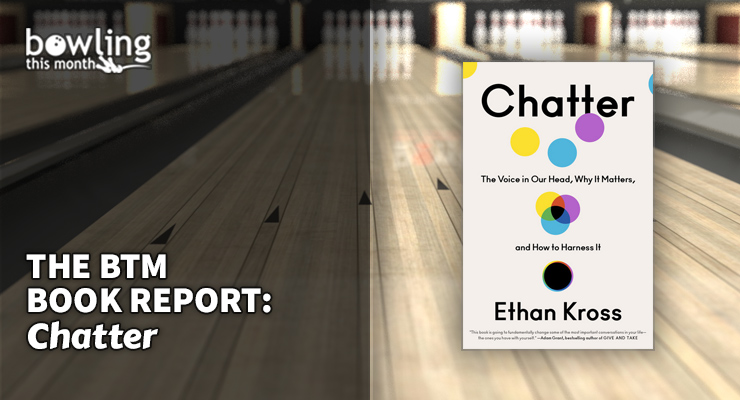Ethan Kross’s Chatter is a book about self-talk. Specifically, it explores the negative self-talk loop that people can find themselves in and what they can do about it. While modern self-help focuses on the value of being mindful and staying “in the moment,” the mind is, in fact, an avid time traveler that can look into the past and peer into the future. This has many benefits, but it also gives us the risk of wallowing in negative chatter. On the bright side, the mind’s flexibility can also provide us with tools to escape this vortex of chatter.
First, it is important to understand that self-talk happens at a rate equivalent to 4000 words per minute. By comparison, speeches of about 6000 words can take up to an hour to speak aloud. Research has shown that internal chatter that takes the form of repetitive anxious thoughts will sabotage focused tasks. The author uses the example of professional baseball pitcher Rick Ankiel, whose entire career was turned upside down by chatter. When his mind suddenly shined a spotlight on each physical component of his pitching motion, he lost the ability to perform at the level required and took years to transform himself back into a major leaguer—as an outfielder instead of as a pitcher.
Second, Kross details a study proving that negative experiences are more likely to trigger the desire to verbalize your emotional state. People want to share their negative experiences much more often than their positive ones. When you factor in social media’s instant availability to share and over-share, we get another key ingredient in creating paralyzing chatter. The author gives example after example of chatter-inducing moments and research that has gone into understanding how the mind processes chatter, and how to reduce it.
In one study, psychologists found that there was a distinct difference in a person’s verbal stream when replaying an upsetting memory through different points of view. When visualized in the first person, participants were completely immersed in the emotional experience and described things much more negatively. Those who replayed the experience from a third-person “fly on the wall” point of view were able to keep a clearer head and separate themselves more from the emotional context. The conclusion was pretty simple: if you want to hold onto positive experiences, relive them through the first-person point of view, but when processing negative experiences, it’s best to distance yourself using a third-person point of view.
This is related to another study about how people talk to ...
This article is only available to Bowling This Month subscribers. Click below to get instant access to this article and all of our other premium instructional content.
Subscribe to Bowling This Month
Already a Bowling This Month subscriber? Click here to log in.
